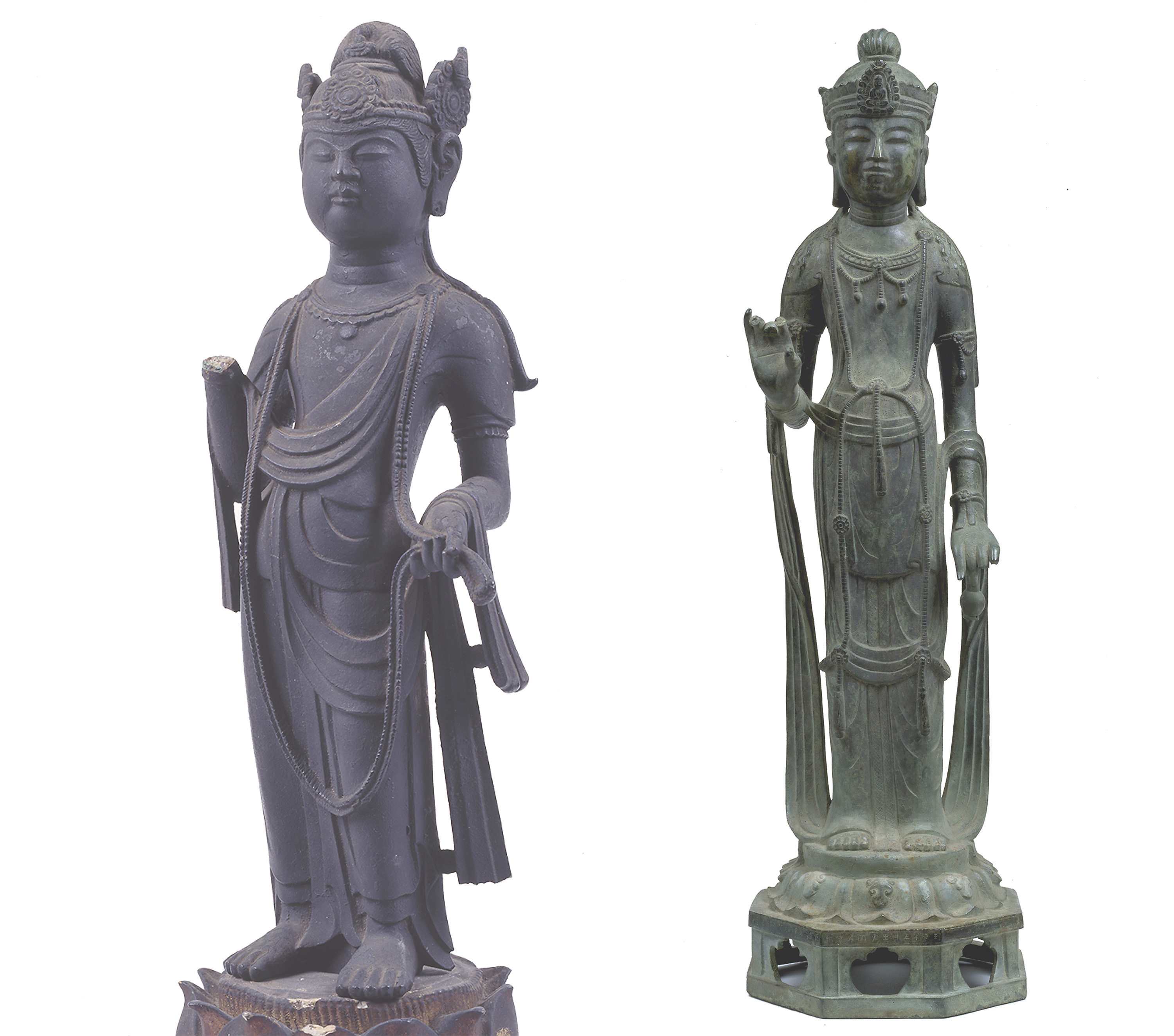Works from the Tendai Buddhist Gakuenji temple in Shimane Prefecture form the feature exhibition of Kyoto National Museum's New Year's show. Tradition tells that the priest Chishun established Gakuenji around the time of the Empress Suiko (554-628) though centuries passed before it was first alluded to in literary records. Arguably a famous sacred temple among Kyoto's cultural elite and itinerant mountain priests in earlier days, the first official nominal reference to its existence appeared in the 1213 "Mandate to Gakuenji from the Administrative Office of Mudo-ji on Mt. Hiei."
With literary authentication centuries later, the sculptural record fills in the vacuum, providing opportunity to review some of the early history of Japan's sculptural development, which was based on imported models.
As an exhibition this show is small scale, and the works themselves never reach beyond hip height. The significance, however, is the emphasis on the syncretic relation between the import of Buddhism and the native Shinto in what is generally considered to be a distinctive area of Shinto religion surrounding the Izumo Grand Shrine.

















With your current subscription plan you can comment on stories. However, before writing your first comment, please create a display name in the Profile section of your subscriber account page.